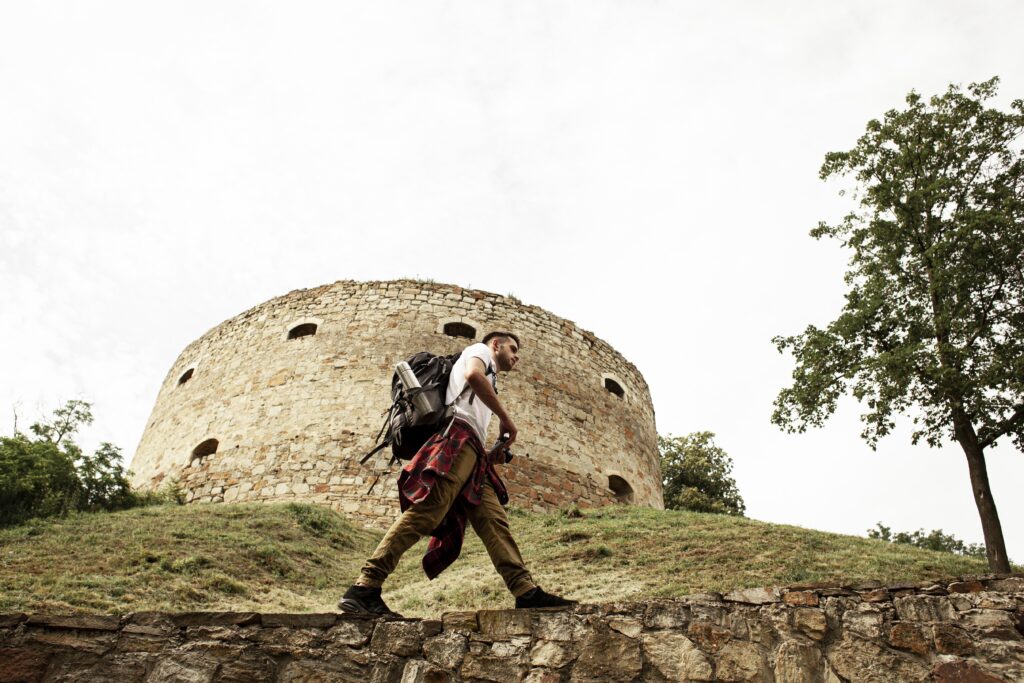Europe, a continent celebrated for its history, art, and diverse landscapes, often finds its most popular cities—Paris, Rome, London, and Barcelona—stealing the spotlight. However, beneath the well-trodden paths lies a treasure trove of lesser-known destinations, each with its own unique charm and allure. These hidden gems offer an escape from the crowds, allowing travelers to immerse themselves in authentic local experiences, breathtaking landscapes, and rich cultural histories. From picturesque villages nestled in the Alps to serene lakes in remote corners of the continent, Europe’s hidden gems are waiting to be discovered. For those willing to venture off the beaten track, these destinations promise to reveal a side of Europe that is both enchanting and unforgettable.
One such hidden gem is the town of Hallstatt in Austria, often regarded as one of the most beautiful villages in the world. Situated on the shores of Lake Hallstatt, surrounded by the Dachstein Alps, this small town is a picture-perfect representation of alpine beauty. Its pastel-colored houses line the lake, reflecting the stunning mountain backdrop, creating an idyllic and tranquil atmosphere. Hallstatt’s charm lies not only in its scenic views but also in its rich history, dating back over 7,000 years. The town is home to the Hallstatt Salt Mine, one of the oldest in the world, offering visitors a glimpse into the region’s ancient past. A stroll through the cobbled streets reveals charming cafes, artisan shops, and historical landmarks such as the Hallstatt Bone House, where intricately painted skulls are displayed as part of the town’s fascinating burial traditions. Whether enjoying a boat ride on the lake, hiking in the surrounding mountains, or simply soaking in the village’s timeless beauty, Hallstatt is a serene escape from the bustling cities of Austria.
Further south, in the heart of the Italian Dolomites, lies the picturesque town of Cortina d’Ampezzo. Famous for its ski resorts, this charming alpine town is a haven for outdoor enthusiasts. The Dolomites, a UNESCO World Heritage site, offer dramatic mountain landscapes, perfect for skiing in the winter and hiking, climbing, and cycling in the summer. While many travelers flock to the Dolomites for winter sports, the summer months reveal a quieter, more peaceful side of the region. Cortina d’Ampezzo is not just a destination for adventure seekers—it is also a place to experience authentic Italian mountain culture. The town’s traditional wooden chalets, cozy alpine restaurants serving hearty local dishes, and lively town center make it an ideal spot to unwind after a day of exploring the surrounding landscapes. Whether enjoying the breathtaking views of the surrounding peaks or savoring a glass of local wine, Cortina d’Ampezzo offers a blend of natural beauty and alpine charm.
Moving to the western side of the continent, Portugal’s Azores archipelago is a hidden paradise waiting to be explored. Comprising nine volcanic islands in the middle of the Atlantic Ocean, the Azores are known for their dramatic landscapes, lush greenery, and crystal-clear lakes. São Miguel, the largest island, is home to the famous Sete Cidades, a pair of crater lakes surrounded by steep cliffs and lush vegetation. The island’s geothermal activity is also a major attraction, with hot springs and geysers providing natural relaxation spots. The Azores are a paradise for nature lovers, offering a wide range of outdoor activities, including whale watching, hiking, and birdwatching. The islands’ remote location and relatively low tourism levels make them a perfect destination for those seeking solitude and natural beauty. With their pristine landscapes, charming villages, and welcoming locals, the Azores offer a unique and off-the-beaten-path European adventure.
Further east, in the heart of Bulgaria, lies the town of Veliko Tarnovo, a place rich in history and culture. Once the capital of the Second Bulgarian Empire, Veliko Tarnovo is perched on the banks of the Yantra River, surrounded by picturesque hills. The town’s most famous landmark is Tsarevets Fortress, a medieval stronghold that offers stunning views of the surrounding valley. A walk through the old town reveals narrow cobblestone streets, traditional Bulgarian houses, and quaint cafes, creating a charming and timeless atmosphere. Veliko Tarnovo is also known for its vibrant arts scene, with local galleries showcasing traditional Bulgarian crafts and contemporary art. The town’s mix of history, culture, and natural beauty makes it an ideal destination for those looking to explore Bulgaria’s rich heritage. Whether visiting the historic fortress, wandering through the old town, or simply enjoying the views, Veliko Tarnovo offers an authentic European experience that is often overlooked by mainstream tourists.
In the Nordic region, the Faroe Islands, located between Iceland and Norway, provide an untouched and unspoiled landscape that is a dream for nature lovers. The archipelago is composed of 18 islands, each with its own distinct beauty, ranging from dramatic cliffs and waterfalls to lush valleys and rugged coastlines. The Faroe Islands are a paradise for hikers and outdoor enthusiasts, with numerous trails offering breathtaking views of the surrounding ocean and mountains. The islands are also home to a rich cultural heritage, with traditional grass-roofed houses and ancient turf churches dotting the landscape. The capital, Tórshavn, is a charming and peaceful town where visitors can explore local markets, dine on fresh seafood, and experience Faroese culture firsthand. Due to their remote location, the Faroe Islands remain relatively unexplored by mass tourism, offering a peaceful retreat for those seeking solitude in nature’s most pristine settings.
In the heart of Spain, the region of Asturias remains one of the country’s best-kept secrets. Located in the north of Spain, Asturias is known for its rugged coastline, lush green hills, and charming villages. The region is often referred to as “Green Spain” due to its abundant rainfall and verdant landscapes, which create a dramatic and picturesque setting. Asturias is also home to the Picos de Europa National Park, a stunning mountain range that offers some of the best hiking and climbing opportunities in Spain. The region’s traditional cider-making culture is another highlight, with local cider houses offering visitors a taste of Asturias’ unique flavors. The region’s rustic charm, natural beauty, and rich cultural heritage make it an ideal destination for travelers seeking an authentic and unspoiled Spanish experience.
Finally, in the heart of Romania, the Transylvanian countryside offers an enchanting journey into the land of myths, legends, and medieval history. The region’s rolling hills, fortified churches, and castles create a storybook atmosphere that transports visitors back in time. The town of Sighișoara, a UNESCO World Heritage site, is one of the best-preserved medieval towns in Europe, with its cobbled streets, colorful buildings, and historic clock tower. Nearby, the famous Bran Castle, often associated with the Dracula legend, adds to the region’s allure. Transylvania is also home to the Carpathian Mountains, offering a range of outdoor activities, from hiking and skiing to wildlife watching. Whether exploring medieval towns, visiting ancient castles, or immersing oneself in local folklore, Transylvania offers a magical and unique European experience that remains largely untouched by mass tourism.
In conclusion, Europe’s lesser-known destinations offer a wealth of experiences for travelers seeking to venture beyond the usual tourist trail. From the alpine beauty of Hallstatt and Cortina d’Ampezzo to the remote landscapes of the Azores and the Faroe Islands, these hidden gems promise to provide authentic and unforgettable journeys. With their rich history, stunning natural beauty, and welcoming locals, these destinations reveal a side of Europe that remains hidden, waiting to be discovered by those willing to step off the beaten path. Whether exploring medieval towns, hiking through mountains, or immersing oneself in local cultures, Europe’s hidden treasures are sure to leave a lasting impression.






